Two leading conferences in the fields of machine and deep learning
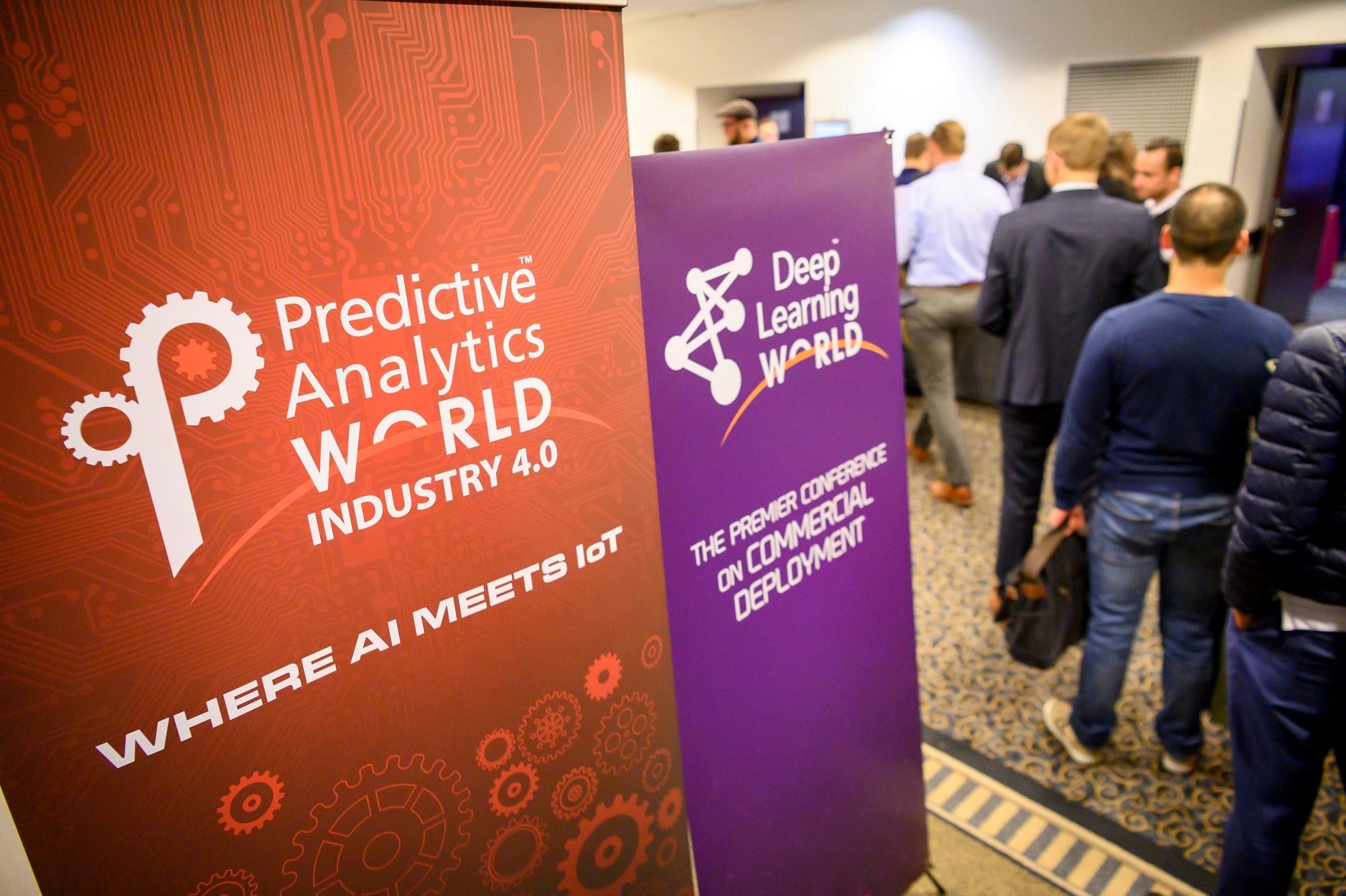
On the 6-7th of May two premier events dedicated to machine and deep learning, neural networks and their applications took place in Munich: Deep Learning World and Predictive Analytics World Industry 4.0. More than 200 people from 29 countries attended the conferences this year!
It is hard to find quality conferences where the speakers share not only theoretical possibilities of technologies, but also practical implementation that brings a real economic value to the companies. This was the case with the conferences in Munich.
What is Deep Learning World and Predictive Analytics World Industry 4.0?
The two conferences are global forums that take place in different cities around the world. The Munich branch of Predictive Analytics World was held for the second time, although this year the organizers decided to add one more conference – Deep Learning World. By combining the two events under the roof of Holiday Inn, the speakers were able to cover a larger spectrum of topics: Deep Learning World focused on technical matters of deep learning and neural networks, while Predictive Analytics World Industry 4.0 – on practical implementations of Internet of Things and machine learning in business.
SMART business at Deep Learning World Munich 2019
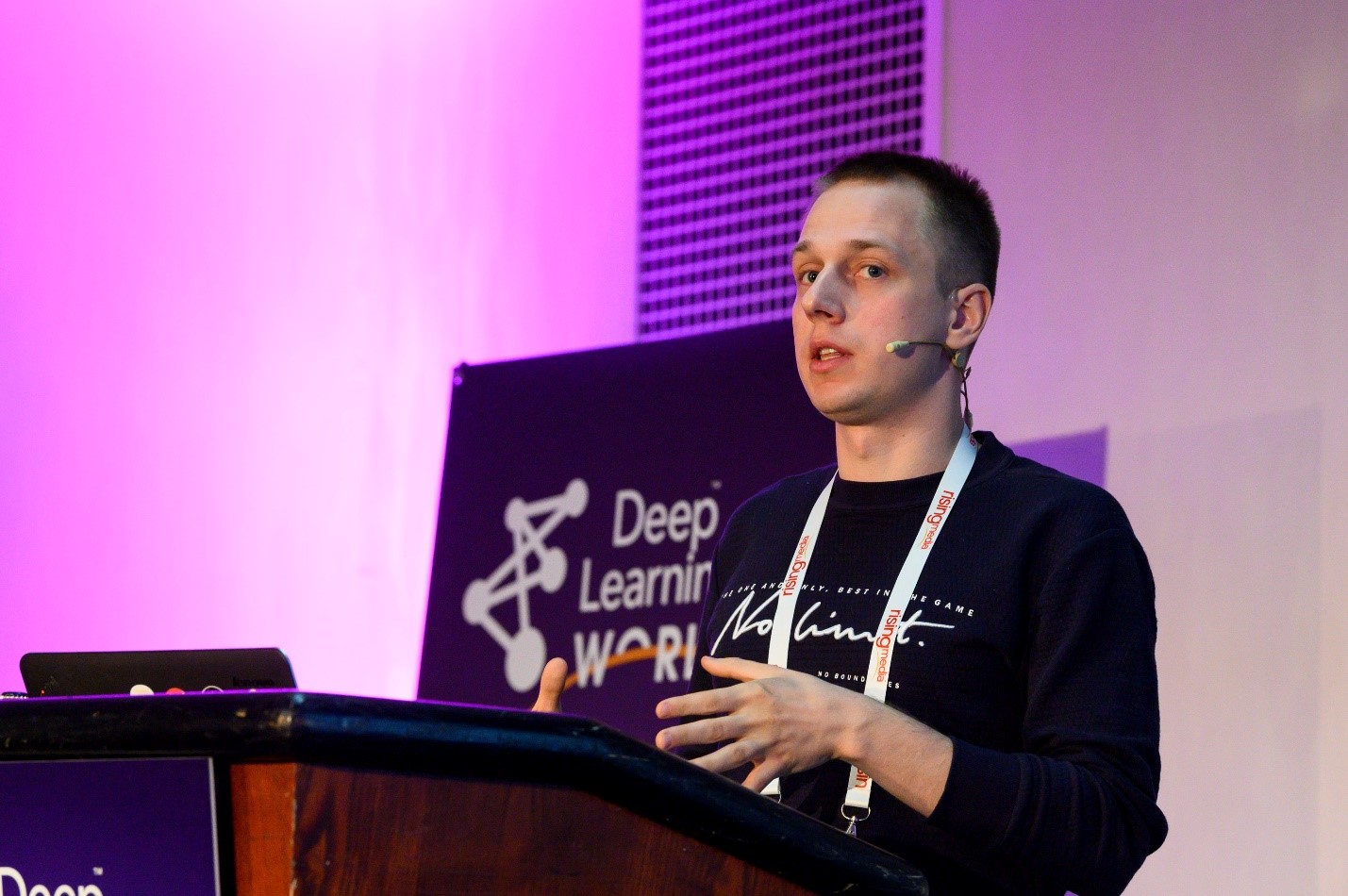
SMART business, as a partner of Microsoft AI Inner Circle Partner Program, attended the conference for the second time, where it was represented by a data science engineer, Andrii Shchur.
– The speakers came to Deep Learning World with strong topics from the technical point of view, – shared his impressions about the conference Andrii. – SMART business’ solutions keep up with the presented technologies and in some instances, we are even one step ahead!
In Munich, Andrii presented a topic: “How Recommender Approach Evolution Led to Recommendations Through Neural Networks and Machine Learning.”
With the growing number of products, data and users, it has become important for companies to provide their clients with relevant content and products according to their preferences and tastes. Recommender systems based on deep learning algorithms allow to analyze large data sets in order to make personalized offers for each client. Algorithms determine the most relevant offer based on purchase data: frequency of purchase, price categories, store location and demographics.
SMART business’s solutions integrated in the operations of retail chains “Chervonyi Market” and “Citrus” provide recommendations with the accuracy of 85%. The models help companies to understand clients’ behavior, offer them relevant products at the right time and through the right communication channel. The recommender systems improve purchase conversion from 5% to 15%.
– The participants were quite engaged in the topic, asked questions and took part in the discussion, – said Andrii. – For example, representatives of the Helsinki city library mentioned that implementation of a recommender net significantly increased visits conversion at the library. It is nice to hear that neural networks are effective for nonprofit solutions – it proves that the technologies have a real value.
Chatbots and translation systems
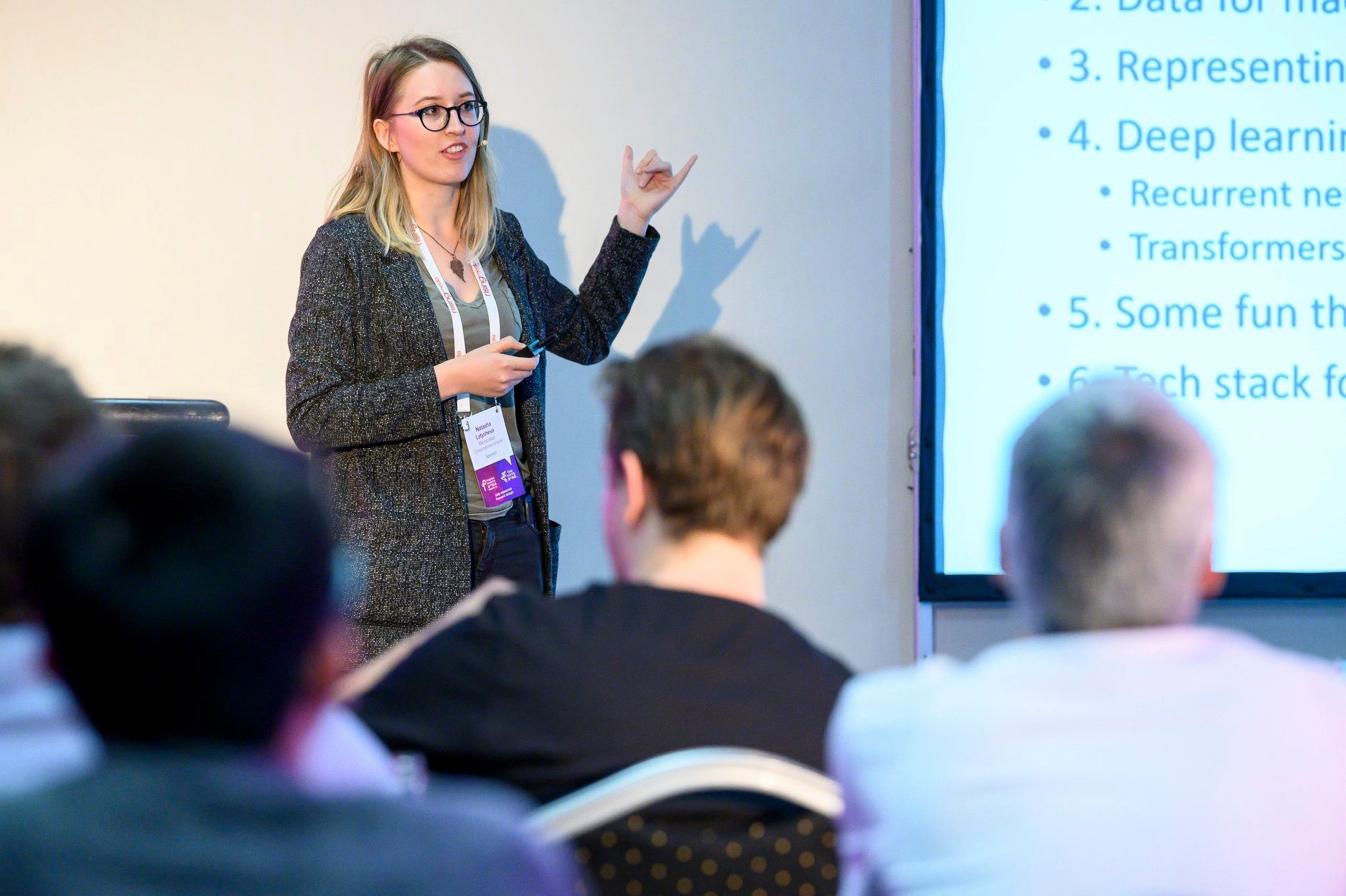
“Deep learning approaches have proved to be powerful at modelling the intricacies of language and have surpassed all statistics-based methods for automated translation.” (Natasha Latysheva, Machine Learning Research Engineer)
– An important challenge for any kind of dialog agent or chatbot is to include external knowledge into a conversation with the user, – said Sebastian Blank, a data scientist from inovex. – However, the complexity of natural languages makes it hard to capture diverse utterances with set, pre-defined rules.
Engineers developed an approach that leverages deep learning that learn how to query an elastic search given natural language questions. Such systems interact with relational databases – as a result chat-bots interact with a higher precision.
Deep learning for defect detection and visual inspection on an assembly-line
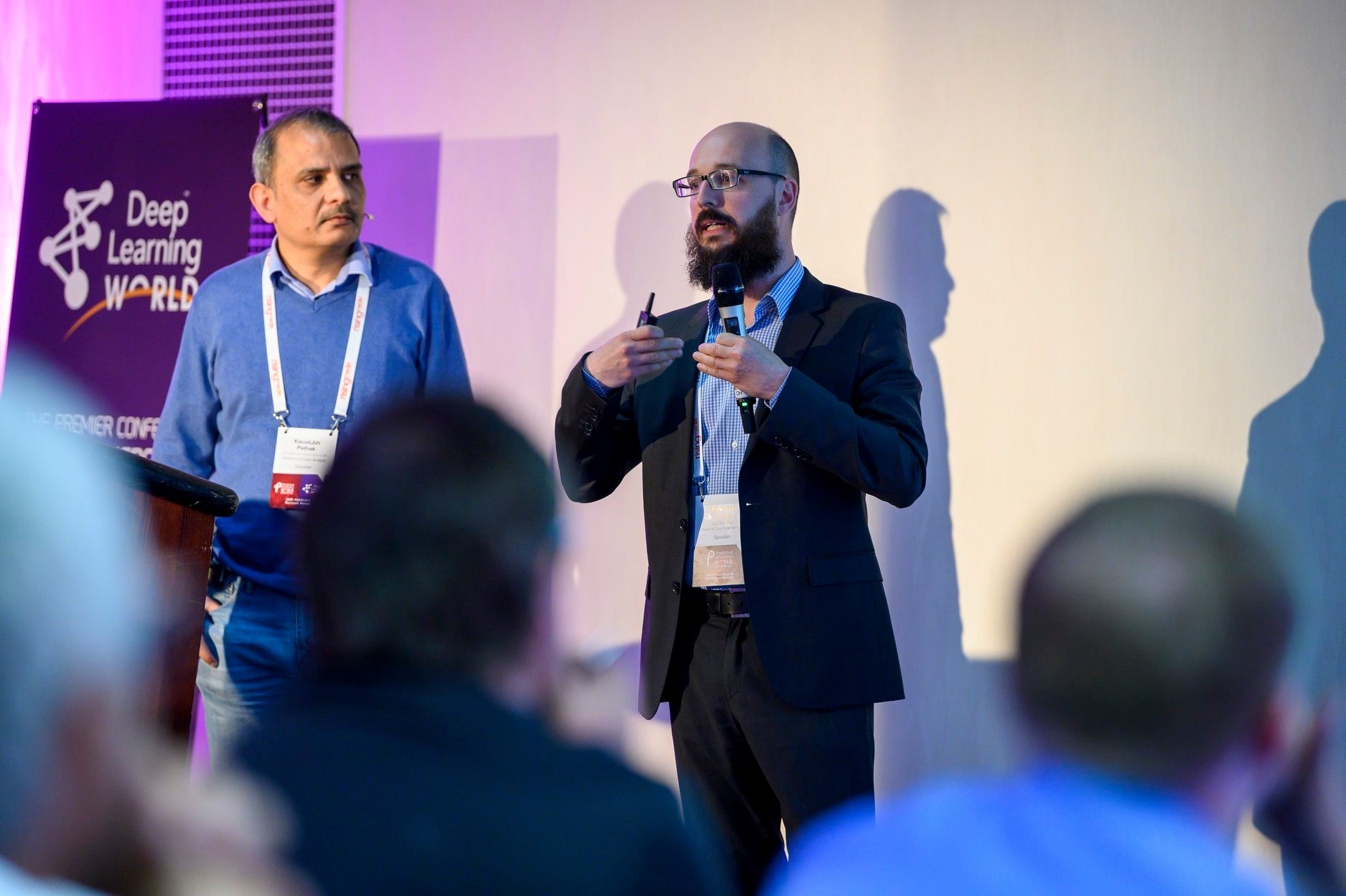
“The recent advances in machine learning algorithms combined with powerful computational hardware have opened new possibilities for defect detection in manufacturing processes.” (Johannes Kröckel, the head of Data Science & AI at Schaeffler)
Developers from Schaeffler implemented Visual Inspection on the assembly-line to detect defects in products manufacturing. Instead of a person who individually checks every element, a camera installed above the assembly-line controls the defects. The results show that deep learning approaches are applicable for the real-time VI in production – the model learned how to register each item in context and minimized human factor faults.
IoT is also applicable for identification of anomalies in machinery. For such solution to work various sensors must be installed on each machine. By analyzing data from different sources, the models can recognize operation anomalies and immediately recommend actions to fix an item.
Deep learning for textual assessment of contracts
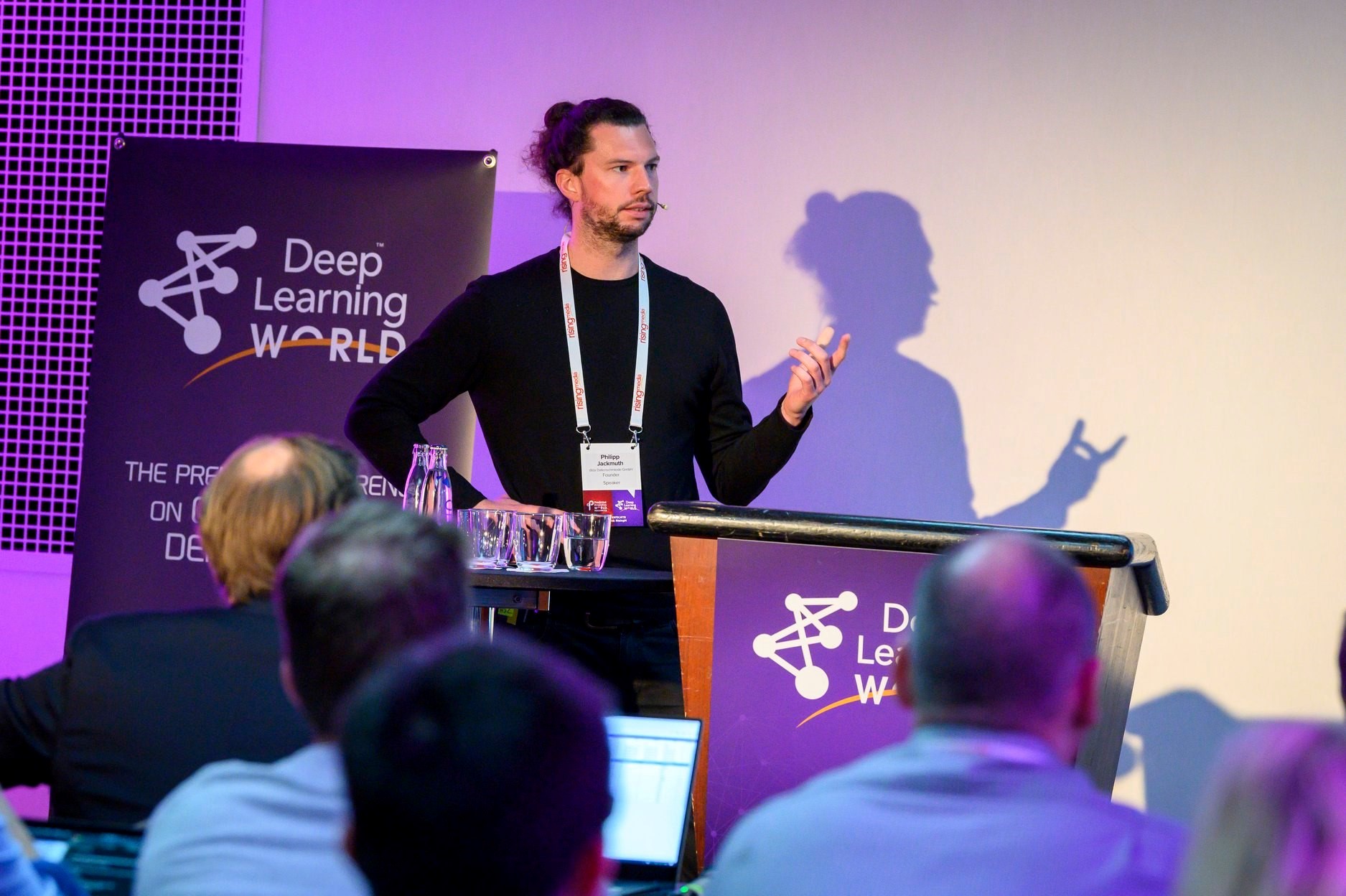
Power capacity of deep learning algorithms already allow to judge contracts’ legal validity. Philipp Jackmuth, the founder of dida Datenschmiede, demonstrated an application of a neural network on rental contracts. The model uses digitalized contracts to identify mistakes or conflicts with the latest law. It shows which contracts should be rewritten and which terminated.
A few topics from Predictive Analytics World Industry 4.0
– The level of topics at Predictive Analytics World this year increased, – mentioned Andrii. – The cases and solutions were more complete, while the speakers presented more cases with practical application of machine and deep learning systems. The division into two streams allowed to fully concentrate on technical matters at Deep Learning World.
German railways use machine learning to estimate electricity supply
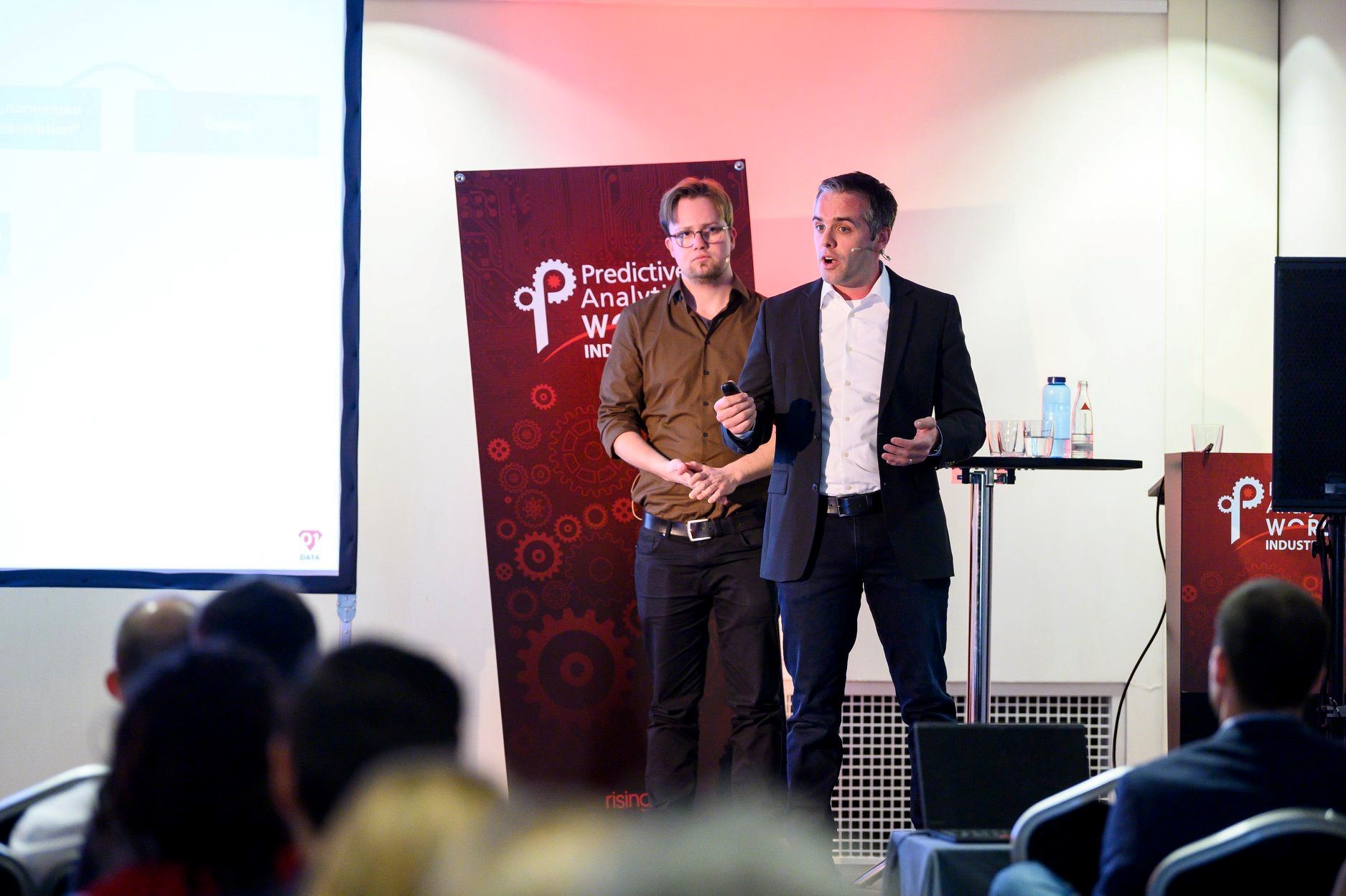
When electricity is the main source of energy in the trains, its supply allocation becomes vital. Engineers from Deutsche Bahn, the main German railway operator, developed a machine learning model for estimating electricity supply on the trains.
Considering trains’ schedule, weather conditions, time of the day and traffic congestion, the model predicts the amount of electricity needed for a particular cluster at a particular period of time with the accuracy of 85%. This allows to optimize energy allocation and minimize possible delays of trains arrival.
Data Science methods at work in the Vodafone network
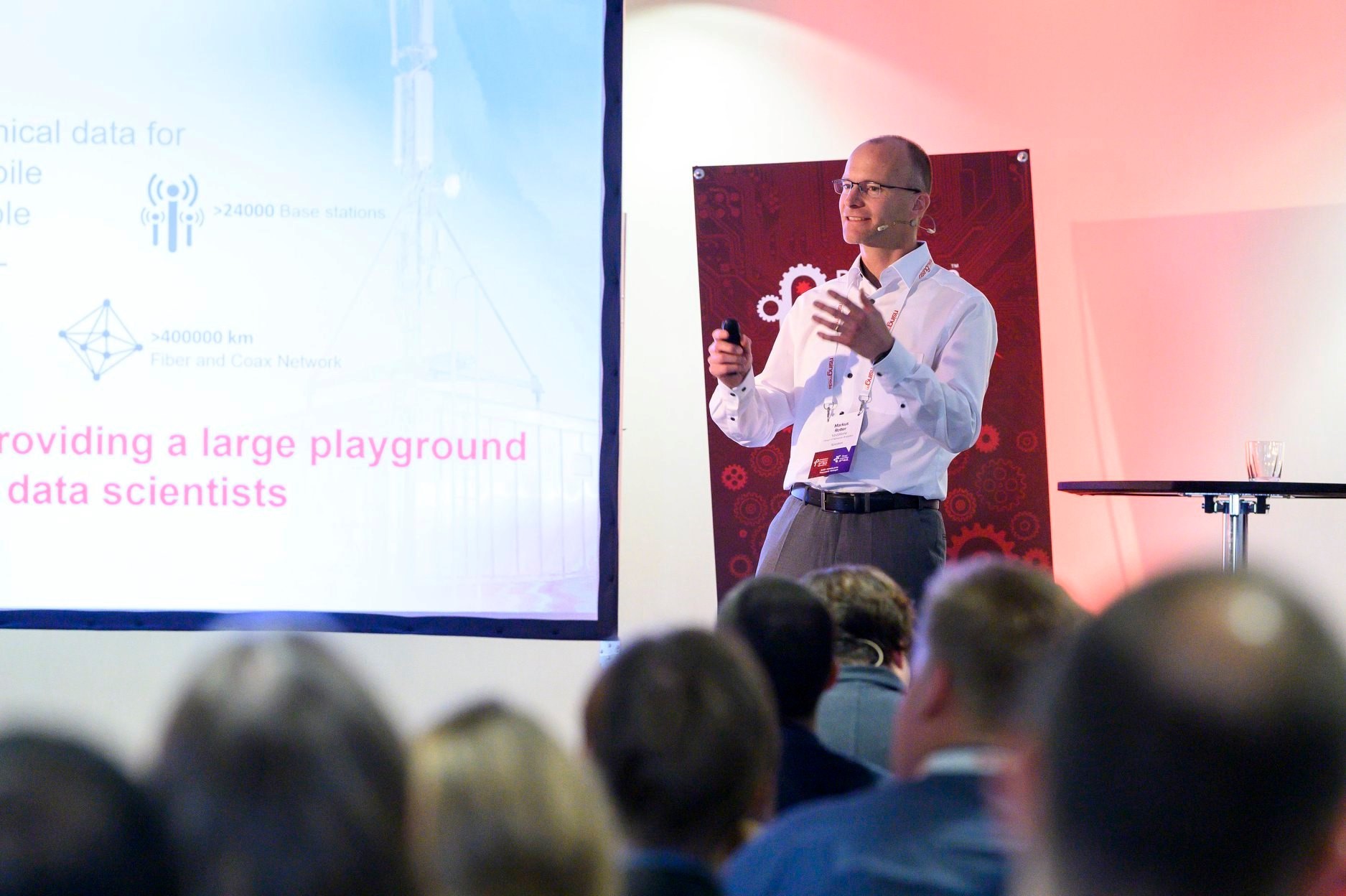
Markus Rotter, the head of Network Analytics at Vodafone, told that the company uses machine learning algorithms and IoT for network predictions in Germany. The model recognizes an increase in trunk line load and predicts the network consumption for the nearest future. Using such information, the team at Vodafone orders to build new trunk lines and new towers in the places with high consumption figures.
Vodafone also uses machine learning to predict customer retention. The company builds communication with a client based on the available data. Analyzing 80+ parameters, including technical information about the router, speed of the cable, information about the trunk line and demographic factors, the team offers relevant packages and provides necessary technical assistance.
A commercial use of IoT in farming data
In order to improve cows’ life and their milk productivity, some farms in Germany use IoT. Hundreds of sensors that are placed on the farm itself as well as on the animals continuously monitor a cow’s health over multiple automated sources. From heart rate and food availability to the temperature and humidity, the model shows which actions must be taken in order to improve a cow’s life.
Conclusions
Machine and deep learning are enabling solutions that were not practical fifteen years ago. Deep Learning World and Predictive Analytics World Industry 4.0 showed once again that technological progress has led to more precise data analysis, improving the level of predictions, reducing client retention and optimizing any business model.
